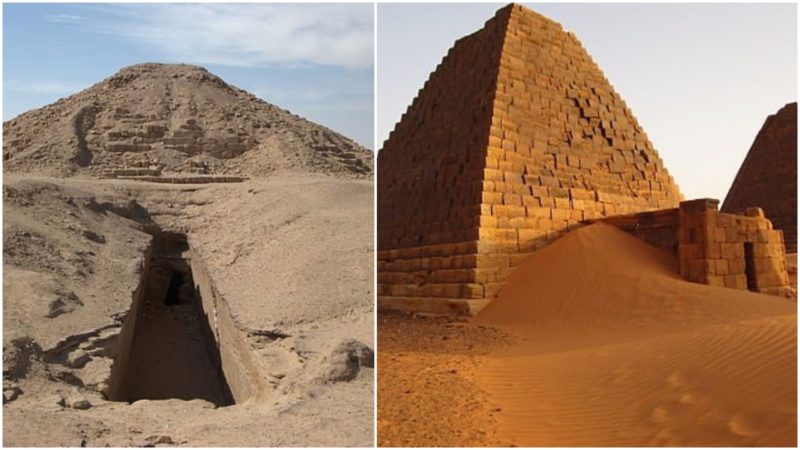The Nubian pyramids, also known as the Kushite pyramids, were erected by the kings and queens of the ancient African Kushite kingdoms.
About 255 Nubian pyramids were built in a period of only a few hundred years and as a point of reference, it was over a 3000 year period that the 115 ancient Egyptian pyramids were built. The royal Nubian pyramids were erected more than 800 years after the Egyptian pyramids were constructed.
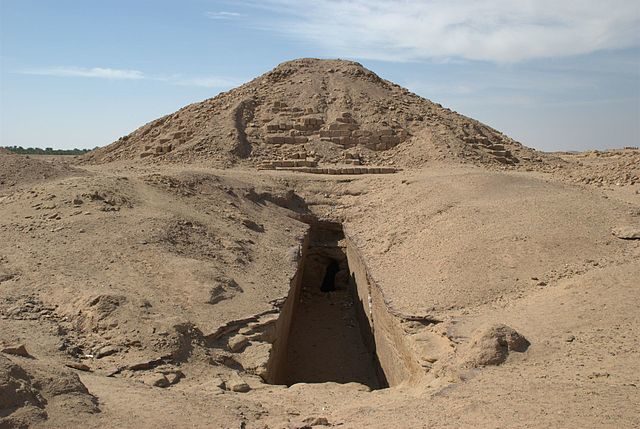
The region south of Egypt in ancient times was known as Nubia. The highly developed settlements of the Nubian civilization were located in the Nile river valley, in the area that is today known as Sudan.
There were three Kushite kingdoms; the first of which flourished from 2600 till 1520 BC and its central city was the ancient city of Kerma. The second was the city-state of Napata (1000-300 BC); and the last kingdom thrived from 300 BC to 300 AD and its capital was the ancient city of Meroë.
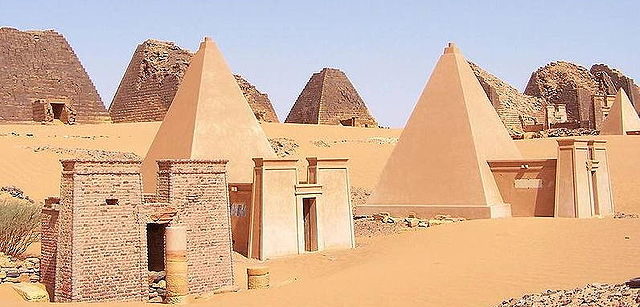
Nubia was often at war with Egypt, and when Egypt was weak, Nubia ruled with its territories, and vice versa, when Nubia’s military was weak, Egypt governed there. Of the three kingdoms, the first kingdom had its own original, native forms of architecture and burial customs, whereas the latter two kingdoms were highly influenced by ancient Egypt.
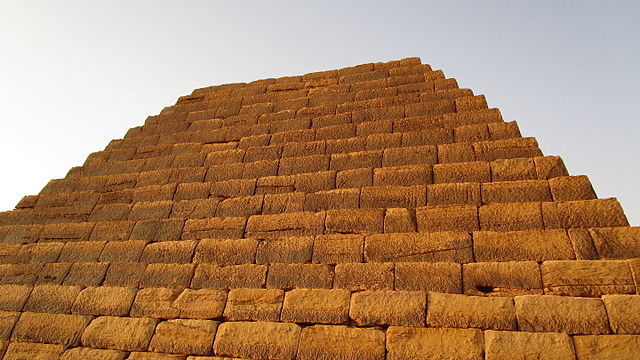
The Nubian Meroë pyramids are located on the east side of the Nile river, near a group of small villages called Bagrawiyah, approximately 62 miles from the Sudanese capital Khartoum. More than 50 pyramids are located in the desert sands at the site of Meroë and they are the best preserved of all the Nubian pyramids.
Also located at Meroë are the tombs of more than 40 Kushite kings and queens. The huge number of pyramids and other structures located in Meroë show that this was a large and prosperous city. At its peak, the city streets were full of activity, teeming with local people from places nearby, the city’s inhabitants, and visiting trade caravans.
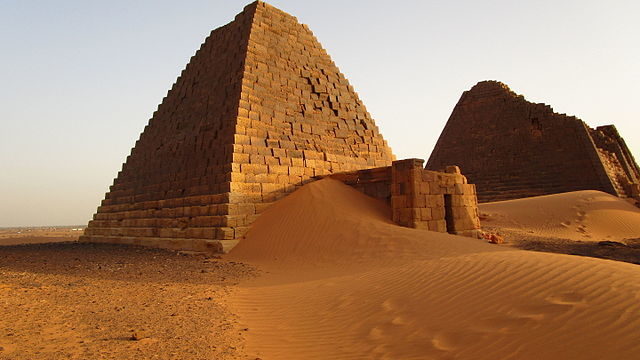
The pyramids built in Meroë are a perfect example of the characteristic Nubian style of architectonic pyramid construction. These pyramids are much smaller than the Egyptian pyramids, but just as impressive. They are built from sandstone, approximately 32 to 98 feet high. They are step-sided and built on a plinth, and they have sharp angles and quite a narrow foundation.
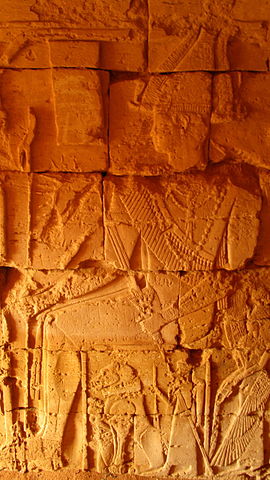
All of the Nubian pyramids were plundered in ancient times and so today, most of their wealth is gone. The carvings on the inner walls of the pyramids show that the buried were royal members of society.
The dead bodies were mummified, covered with precious jewelry and laid to rest in wooden cases. Among the artifacts found during the archaeological expeditions in the 19th and 20th century were pottery, metal vessels, wooden boxes, rings, colored glass, remains of bows and arrows and other precious objects. These findings proved that the lost Nubian civilization had trade connections with Egypt and the Hellenistic world.
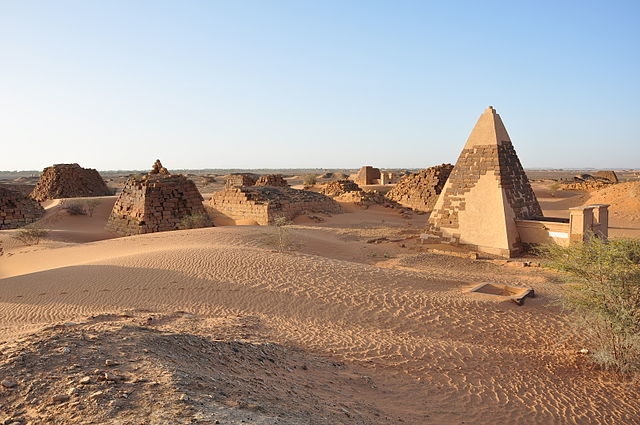
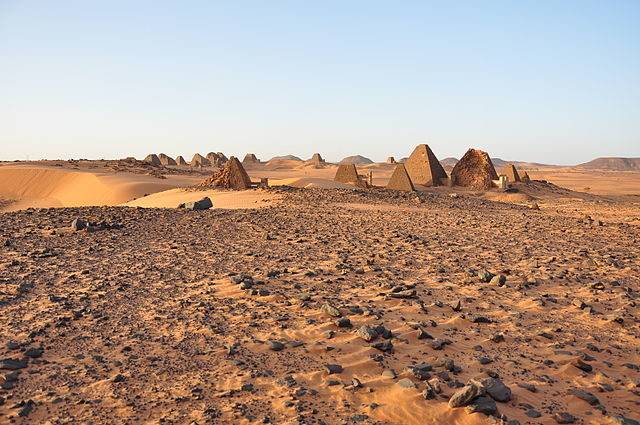
In the 1830s, the pyramids were heavily damaged. The Italian doctor, explorer and treasure hunter Giuseppe Ferlini blew off the tops of all the pyramids in Meroë in a quest to find treasure.
Much later on, he sold the discovered items to British and German museums. Among them were samples of Meriotic writings and reliefs depicting the glorious historic events of the city of Meroë and the lost Nubian civilization. A few of the pyramids have been restored in modern times. Today the site is visited by tourists, but in recent years their numbers have seen a rapid decline, mainly due to the turbulent events in the region.
